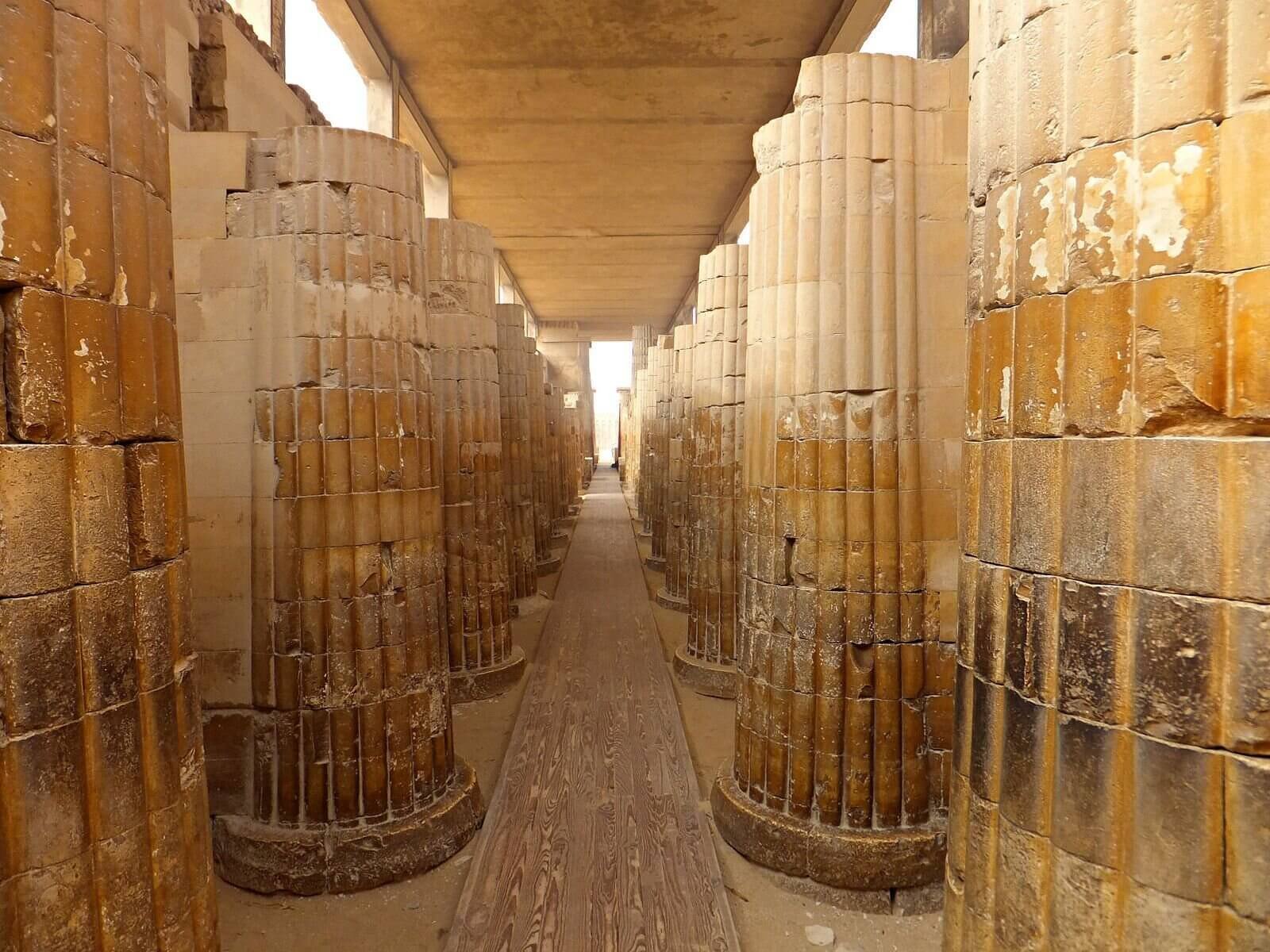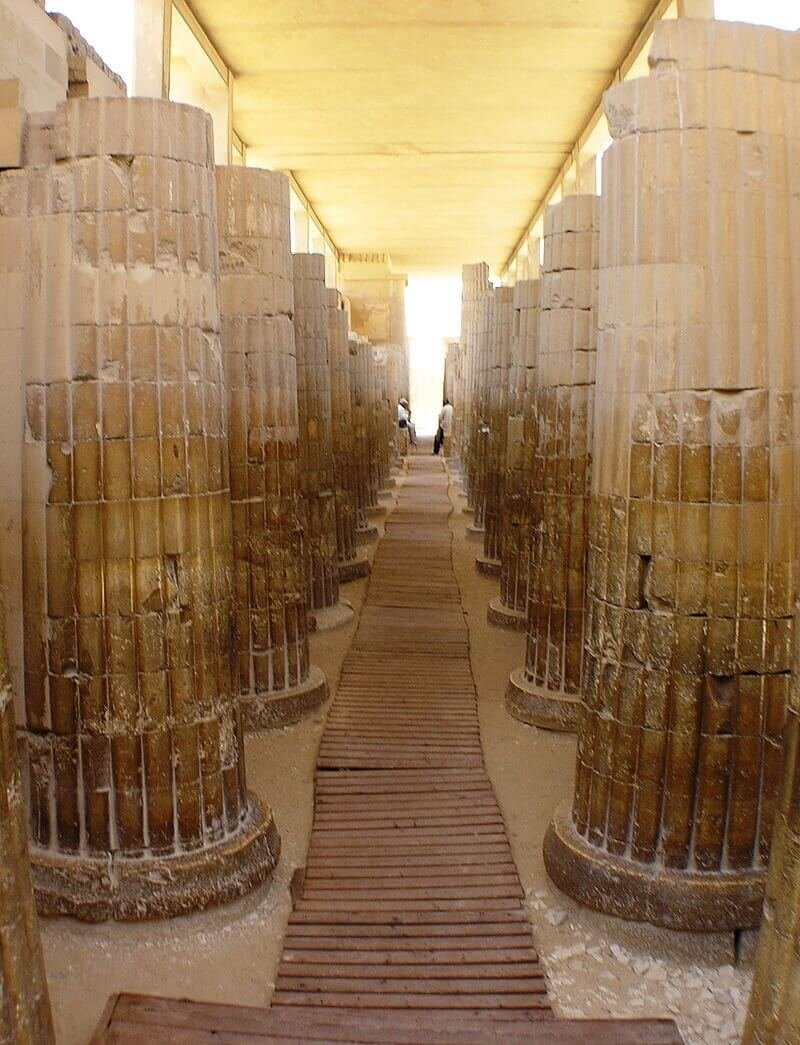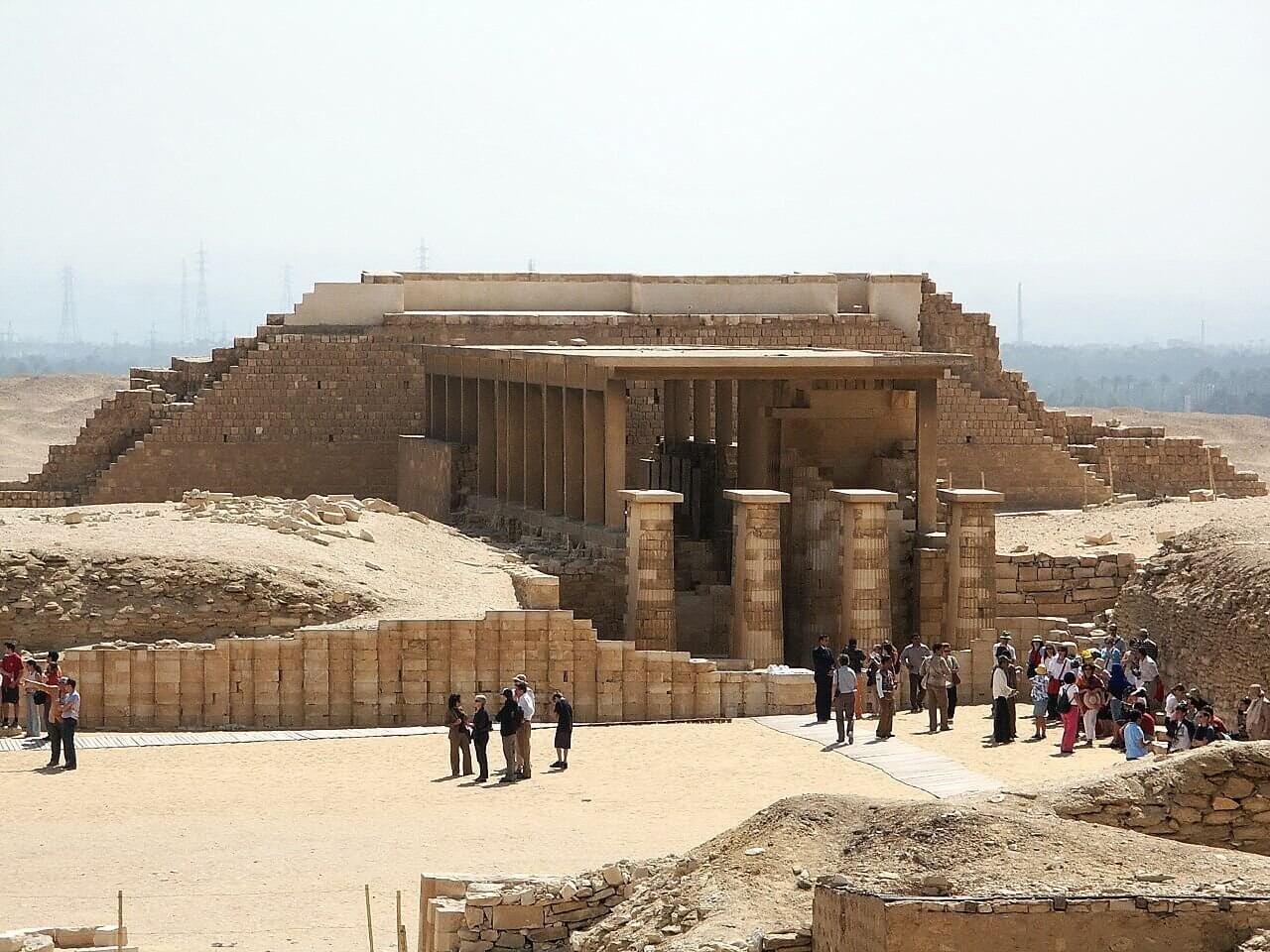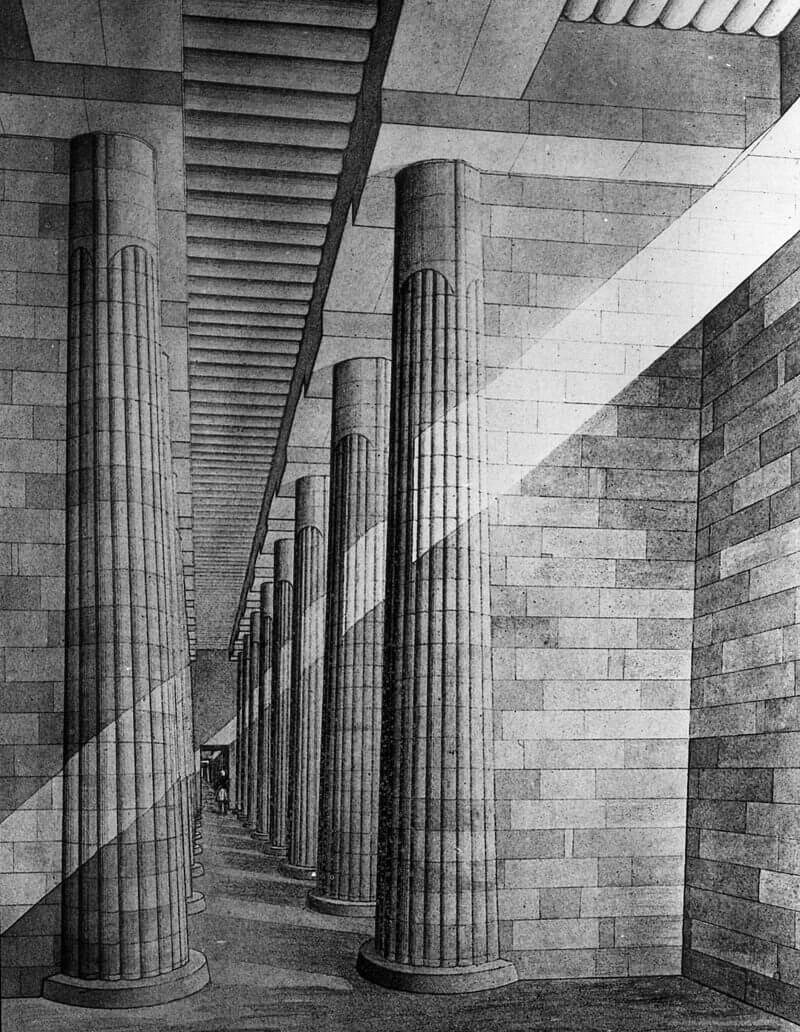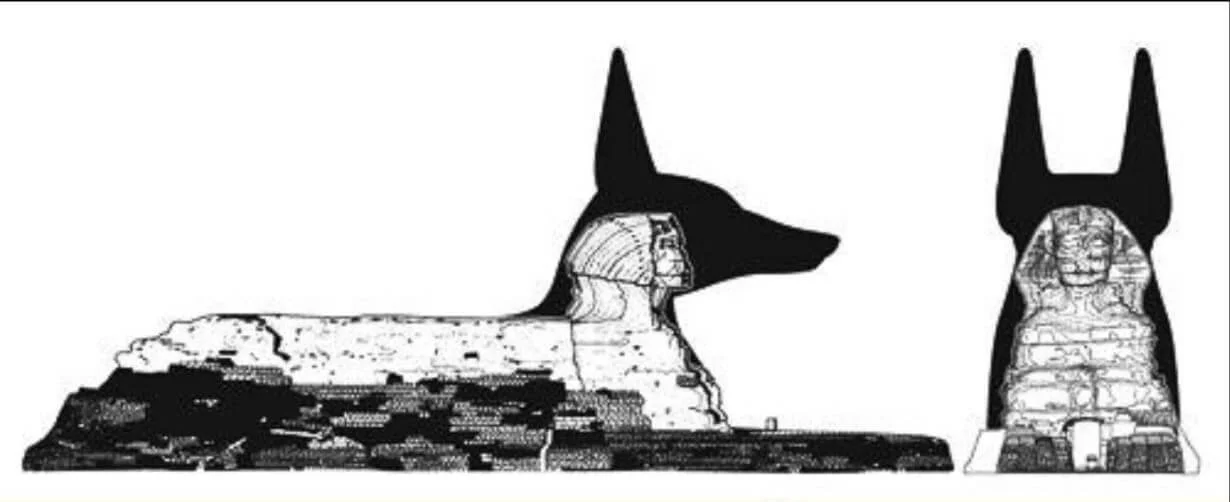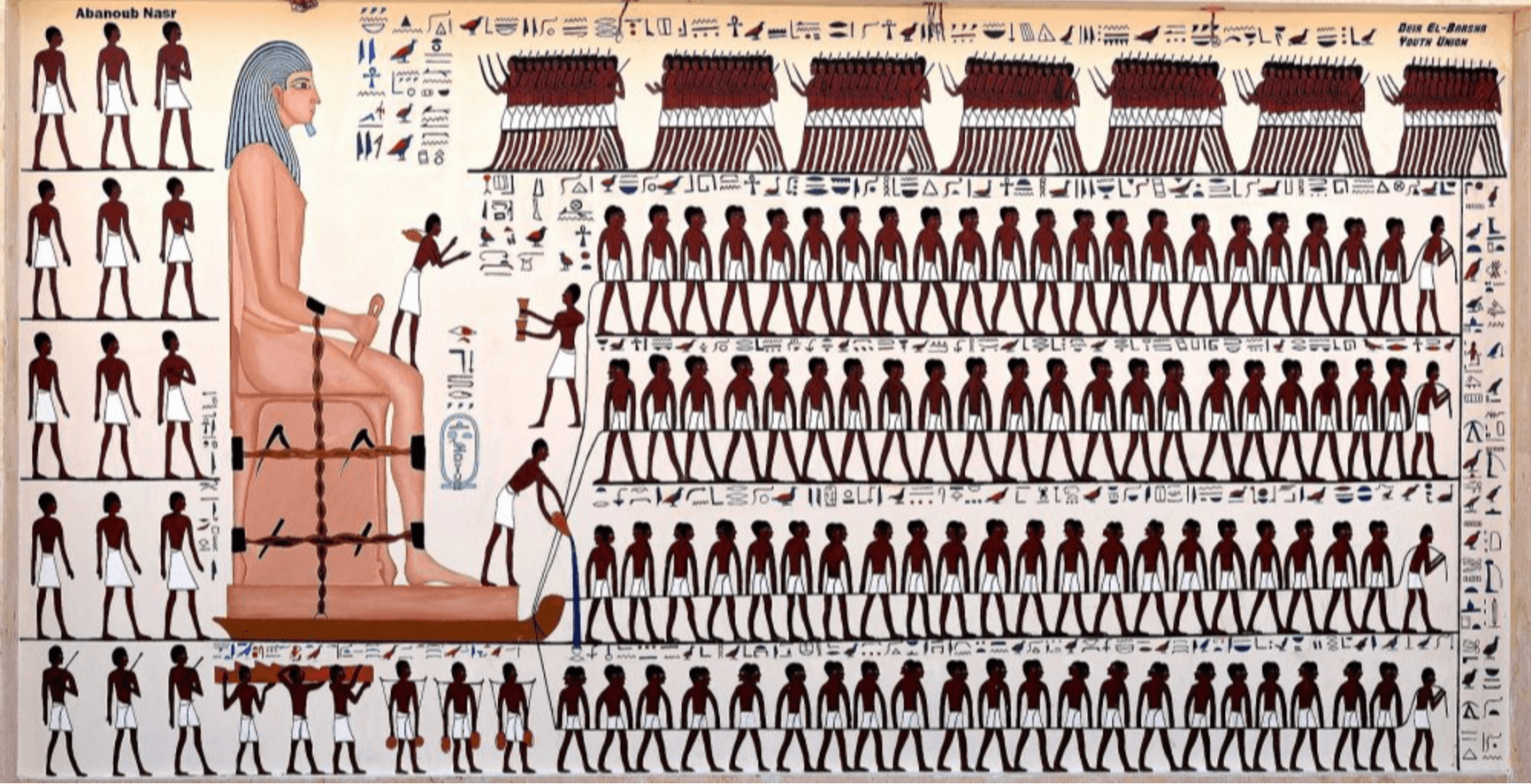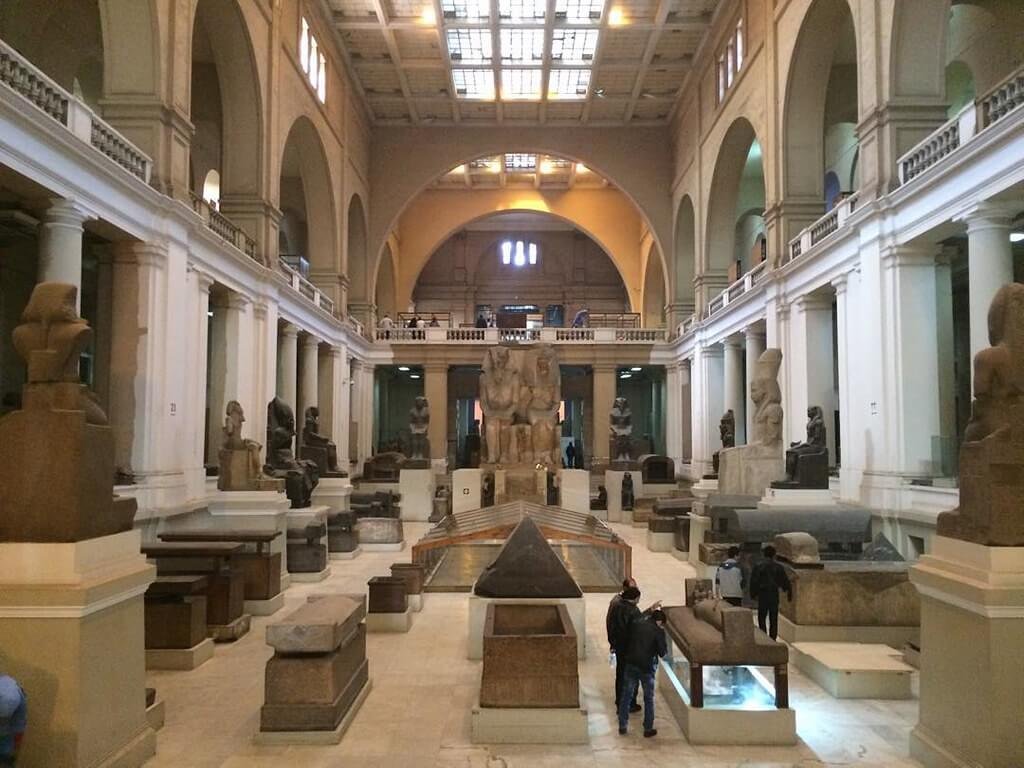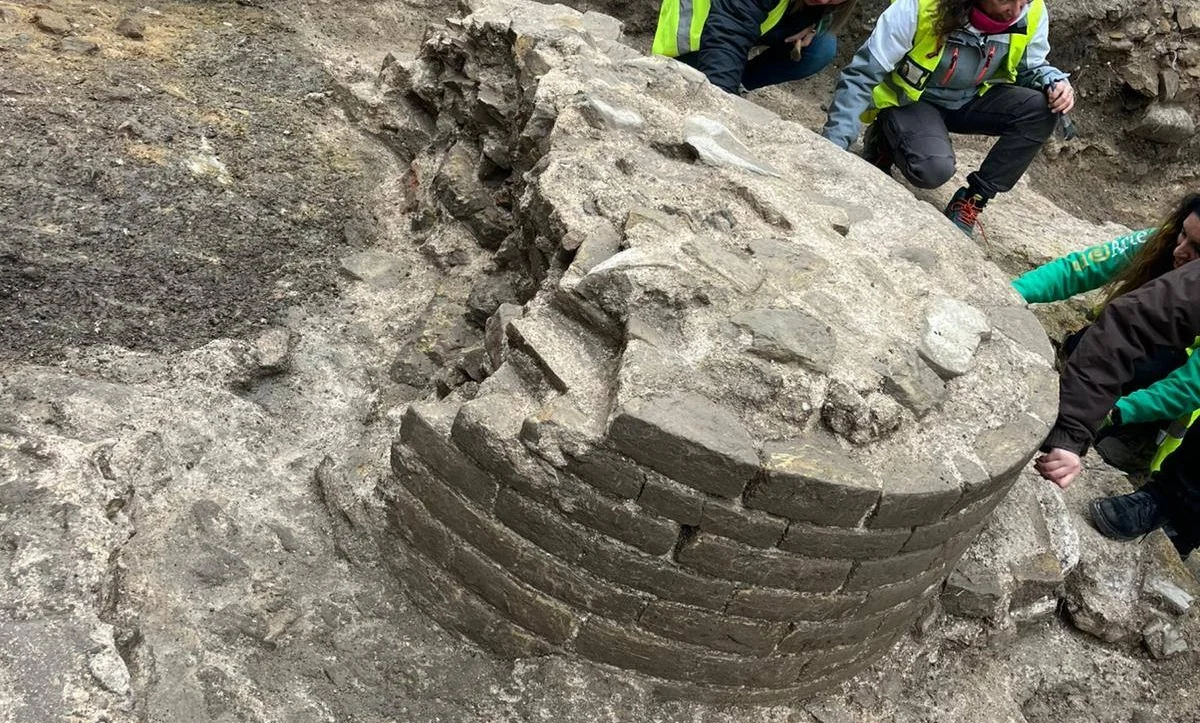Geological Evidence: Weathering and Age of the Sphinx
In the 1990s, the Great Sphinx became the focus of a high-profile geological debate: does the weathering and erosion on the Sphinx indicate it is far older than Khafre’s era? This question was sparked by research from outsiders to Egyptology and has since been addressed by geologists and archaeologists on both sides. The mainstream geological view aligns with the Egyptological timeline (4th Dynasty), explaining the Sphinx’s erosion within known historical and environmental conditions.
The Erosion Controversy: In 1992, Robert M. Schoch (a geologist) and John Anthony West (an independent researcher) proposed that the Sphinx’s enclosure shows heavy rainfall erosion, which could only be the result of prolonged wet climate thousands of years earlier than 2500 BC. They noted the Sphinx’s body and the walls of its pit have a “rolling,” undulating profile, with deeply weathered recesses, unlike the sharper wind-eroded tombs nearby. Schoch initially estimated the Sphinx might date to 7000–5000 BC or even earlier (circa 9000 BC in some statements) – essentially positing a lost civilisation predating dynastic Egypt. This extreme redating was and is a fringe viewpoint. It elicited strong reactions: geologist James A. Harrell noted that Schoch’s arguments were purely geological and did not account for the rich archaeological context tying the Sphinx to Khafrehallofmaat.com. To resolve this, mainstream geologists have re-examined the Sphinx’s erosion.
Mainstream geological interpretation: Studies by K. Lal Gauri (1993, 1995), James Harrell (1994), and others concluded that the observed erosion can be explained without abandoning the Old Kingdom date. Several key points from these studies:
The Giza plateau’s Mokattam limestone has layers of differing hardness. The Sphinx’s body is composed of softer marl-like layers interbedded with harder limestone. When exposed to weather, the softer layers weather more rapidly, creating recesses, while harder layers stand out in relief. This naturally yields a rounded, undulating profile over time – even under wind-driven sand erosion or limited rain. Harrell pointed out that nearby 4th Dynasty tombs (e.g., the Tomb of Debehen) at a similar elevation show flat walls but with the weaker layers beginning to recess due to wind/sand, consistent with early stages of what we see more exaggerated on the Sphinx. In short, the Sphinx’s pattern could be a result of thousands of years of slow weathering of alternating layers, not necessarily intense rainfall ages earlier.
Rainfall in Old Kingdom and later: While Egypt’s climate was largely arid by Khafre’s time, sporadic heavy rain events have occurred throughout history. W.F. Hume, a director of the Geological Survey of Egypt, documented sudden torrential rains in the desert that caused flash floods and cut deep channels in soft rock. Such events, even if rare (once a century, say), over a few millennia can contribute to significant erosion. The Sphinx enclosure may have collected rainwater runoff in rare storms, periodically washing against the walls. Moreover, right after the Old Kingdom (c. 2200 BC), Egypt’s climate did become slightly wetter for a time; and again in the early first millennium BC there were episodes of greater rainfall. These could have hastened the rounding of the Sphinx’s features. Importantly, the Sphinx has spent most of its history buried up to its neck in sand, which actually protects the lower body from wind erosion but can trap moisture against the rock. Geologists note that damp sand against limestone causes salt crystallisation that breaks down the surface.
Active weathering today: Zahi Hawass has observed that even in modern times the Sphinx’s stone is deteriorating – flakes pop off due to salt and humidity changes. Researchers agree that “the same erosion patterns cited by Schoch still continue on a daily basis” in the present climate. This undermines the notion that only a prehistoric climate could produce the observed erosion. In fact, much of the damage may have accelerated in the last millennium or two, due to the rising water table and human activity. Thus, one need not invoke 10,000 BC rainstorms – normal weathering processes in an arid environment (wind, rare rain, dew and salt) are sufficient to explain the Sphinx’s condition.
Mainstream geologists who studied the Sphinx (like Gauri et al. in Geoarchaeology 1995) concluded that the weathering is compatible with an age of ~4,500 years. For example, Gauri showed how combinations of wind erosion, wet sand, and chemical weathering could create the rounded profile in a relatively short geologic time. Lehner notes that the hardest layers (e.g., the Sphinx’s head, which is a harder limestone member) have survived almost intact except for the nose, whereas the softer body is deeply weathered – a normal differential erosion scenario. If the statue were many thousands of years older, arguably the head would also show much more extreme erosion or would have needed ancient restoration (for which there is no evidence prior to New Kingdom repairs).
To summarise the geological stance: There is no compelling geologic necessity to date the Sphinx earlier than Khafre. Egyptologist Kate Spence quipped that while the Sphinx’s erosion is “dramatic,” the leap to redate it to 7000 BC is “like using a sledgehammer to crack a nut” – unnecessary given simpler explanations (existing weathering processes and Khafre’s context suffice). Mainstream science recognizes Schoch’s observations but finds they are “amenable to an alternative interpretation… more consistent with archaeological orthodoxy.”hallofmaat.com In other words, by aligning the geological evidence with archaeological evidence, the 4th Dynasty date holds firm.
Finally, it’s worth noting that even if the erosion suggested an older date, one would then have to explain why absolutely no artefacts, tools, inscriptions, or burials from a pre-2500 BC civilisation have been found at Giza – a huge problem for fringe theories. The geological consensus therefore reinforces the archaeological timeline: the Sphinx was carved in the mid-3rd millennium BC and has been shaped by natural forces since, requiring vigilant conservation today just as in ancient times.
Mainstream Scholarly Consensus and Debates
Within the Egyptological community, the overwhelming consensus is that Khafre was the builder of the Great Sphinx. This view is supported by virtually all the leading Egyptologists and institutions: the Egyptian Supreme Council of Antiquities (led by figures like Dr. Zahi Hawass), the American Research Center in Egypt, the Giza Plateau Mapping Project (Dr. Mark Lehner), and others have consistently attributed the Sphinx to Khafre’s reign. Hawass states plainly, “Most scholars believe, as I do, that the Sphinx represents Khafre”and was an “integral” part of his pyramid complex. Likewise, textbooks and museum exhibits identify the Sphinx as likely carved under Khafre around 2500 BC. This is sometimes called the “Khafre-Sphinx theory” (essentially the orthodox position).
However, academic discourse allows for some debate. A handful of Egyptologists have proposed variants on the attribution – notably suggesting either Khafre’s father (Khufu) or his half-brother (Djedefre) as the initiators of the Sphinx. It’s important to stress these are minority views, but since they come from credentialed scholars, they merit mention:
Rainer Stadelmann’s Khufu hypothesis: Dr. Rainer Stadelmann (former director of the German Archaeological Institute in Cairo) argued that the Sphinx might have been started by Pharaoh Khufu (builder of the Great Pyramid) and only completed by Khafre or later. Stadelmann noted certain anomalies: the Sphinx’s axis is slightly off-center from Khafre’s pyramid and causeway, which he thought could imply it wasn’t originally part of Khafre’s symmetric plan. He also pointed to stylistic elements (the nemes headdress shape, and the form of the “diadem” or uraeus and beard) that he believed were more characteristic of Khufu’s time. In his view, Khufu – who had no large Sphinx of his own found – might have commissioned the statue as a guardian or as a form of the sun god for his necropolis, and Khafre later reused the idea. Stadelmann published this theory in 1999/2000, suggesting that the “Sphinx and Sphinx Temple was also built by Khufu rather than by Khafre”, essentially a Khufu origin for the Sphinx Temple that Khafre then built his causeway around. To support this, he noted that the Sphinx Temple’s architectural style has some differences from Khafre’s Valley Temple, perhaps indicating an earlier phase. He also tied in religious reasoning: Khufu’s Horus name and solar associations, and the Sphinx’s later name Hor-em-akhet (“Horus of the Horizon”), speculating that the Sphinx could have been a sun shrine created by Khufu as an embodiment of Ra-Horakhty on the horizon. Despite these arguments, most experts remained unconvinced. Zahi Hawass responded that Stadelmann’s case, while intriguing, was not compelling against the body of evidence for Khafregizamedia.rc.fas.harvard.edu. No direct evidence of Khufu at the Sphinx has surfaced – e.g., no Khufu-era tool marks or inscriptions in the Sphinx enclosure. Furthermore, Khafre’s ownership of the Valley Temple and causeway is clear, and the Sphinx fits seamlessly into that context. So Stadelmann’s hypothesis is often acknowledged in scholarly literature but usually refuted as less convincing than the orthodox view. Mark Lehner’s analysis actually allows a nugget of Stadelmann’s idea: Lehner concluded Khafre was responsible for “most of the Sphinx,” but conceded that “Khufu might have started it.”– meaning perhaps Khufu left a proto-sphinx or a shaped outcrop that Khafre later recarved. This is speculative, and Lehner emphasises Khafre’s role as primary. Essentially, even those open to Khufu’s involvement agree Khafre finished and shaped the Sphinx as we know it.
Vassil Dobrev’s Djedefre hypothesis: In the early 2000s, Dr. Vassil Dobrev of the French Archaeological Institute in Cairo announced a theory attributing the Sphinx to Djedefre, the son of Khufu and older brother of Khafre. Djedefre ruled briefly after Khufu but built his pyramid at Abu Roash, north of Giza, which later fell into ruin. Dobrev suggests that during his short reign (c. 2528–2520 BC), Djedefre created the Sphinx at Giza as a tribute to his father Khufu. His reasoning: by the time Khufu died, the people were perhaps weary from pyramid-building, so rather than another giant pyramid at Giza, Djedefre sought a different way to honour Khufu and legitimise his own rule. Propaganda motive: Dobrev argues the Sphinx would represent Khufu as a god (Ra-Horakhty), thereby reinforcing Djedefre’s connection to his illustrious father and the solar cult. Supporting clues include Djedefre’s adoption of the epithet “Son of Re” (he was the first pharaoh to put “Ra” in his royal name), indicating a strong solar focus. Also, in the boat pits around Khufu’s pyramid, some blocks bearing Djedefre’s name were found, showing Djedefre was involved in his father’s funerary arrangements. Dobrev also notes a topographical point: in ancient times, visitors coming from Memphis would approach Giza from the south. From that southern approach, the Sphinx is seen in profile in front of Khufu’s pyramid. It would present a spectacular image of a guardian watching over Khufu’s tomb, potentially fulfilling Djedefre’s goal of memorialising Khufu. This theory was publicised in media around 2004 (a UK Channel 5 documentary “Secrets of the Sphinx”) as a “solution” to the riddle. However, like Stadelmann’s idea, it has not gained wide acceptance. Egyptologist Robert Partridge responded that Dobrev’s argument, while logical, lacked hard evidence: “insufficient evidence to prove his theory”. The Giza excavations have not uncovered any inscription of Djedefre at the Sphinx, nor any direct sign of his work there. It remains possible Djedefre had some role (since the time gap between Khufu and Khafre is small – Djedefre reigned perhaps 8 years, then Khafre took over), but the mainstream still credits Khafre for actually carving the Sphinx. In effect, Dobrev’s scenario requires believing Khafre simply inherited the Sphinx from his brother – yet Khafre clearly built the temples and causeway around it. It’s more parsimonious that Khafre did the whole project. Thus, Dobrev’s theory is seen as an interesting but unproven alternative within academic circles.
Beyond Stadelmann and Dobrev, no other mainstream Egyptologist has a serious published theory assigning the Sphinx to another pharaoh. George Reisner, who excavated at Giza in the early 20th century, briefly wondered if Djedefre could have started it (he doubted Djedefre’s character and thought him an usurper), but Reisner ultimately leaned to Khafre like others. Selim Hassan’s definitive 1940s study of the Sphinx concludes with Khafre. Scholars like I.E.S. Edwards, Ahmed Fakhry, and more recently Miroslav Verner and Mark Lehner have all written that Khafre is the builder. Jane A. Hill and Catharine Roehrig, in museum catalogs, describe the Sphinx as Khafre’s image. In sum, the majority view within Egyptology has remained stable for over a century – Khafre, circa 2500 BC, is seen as responsible.
It’s telling that even the proponents of alternative attributions (Khufu or Djedefre) still place the Sphinx firmly in the 4th Dynasty, only a generation or so away from Khafre. There is no credible academic suggestion that it comes from a radically earlier time or a different civilization. This brings us to the fringe theories, which venture far outside the mainstream and propose extreme chronologies or exotic builders.
Alternative and Fringe Theories – Comparison to Consensus
For completeness, we briefly outline the alternative or fringe ideas about the Sphinx’s origins, and how they contrast with the mainstream consensus:
Pre-Dynastic / “Atlantean” Theories: Inspired by the erosion debate and legends, some have claimed the Sphinx is thousands of years older than Egypt’s Old Kingdom. Dates of c. 10,000 BC (the end of the last Ice Age) are often thrown about, linking the Sphinx to hypothetical lost civilisations. This idea gained traction through the work of John Anthony West and Robert Schoch, who, as noted, argued for a construction possibly between 7000–9000 BC based on presumed water erosion. Others have extended this to even earlier, tying it to the legend of Atlantis (notably, Edgar Cayce prophesied that the Sphinx was built in 10,500 BC by Atlanteans and that a “Hall of Records” lies beneath it). These theories are not supported by physical evidence. Mainstream archaeologists point out that no trace of high civilisation in Egypt (or elsewhere) exists from that period – the Neolithic peoples of 7000 BC left primitive dwellings and small settlements, nothing on the scale of the Sphinx. The fringe proponents often circumvent this by invoking aliens or lost continents, which places their claims well outside scientific plausibility. As a result, Egyptologists do not take these ideas seriously. Hawass has openly derided the more extreme proponents as “pyramidiots” for advancing wild claims (such as secret chambers and alien technology) that distract from real research. The consensus is that extraordinary claims require extraordinary evidence, and so far the fringe ideas have produced no verifiable evidence – only reinterpretations of the weathering (addressed above) and imaginative speculation. In fact, extensive surveys (seismic, drilling) around the Sphinx have not revealed any mysterious pre-dynastic chambers or hidden archives – only natural fissures and some small Old Kingdom tunnels used by treasure hunters.
Cultural context vs. lost civilisation: Mainstream scholars emphasise how well the Sphinx fits into the context of Khafre’s 4th Dynasty court – artistically, religiously, and logistically. By contrast, placing it in 10,000 BC creates an inexplicable gap: one would have to believe that an advanced society sculpted the Sphinx (and perhaps began carving on the Giza site), and then all knowledge and progress vanished, only for Egyptians 6,000 years later to coincidentally build their pyramids right next to it. This scenario is seen as vastly less probable than the straightforward one: the Old Kingdom Egyptians themselves, whose ability to build pyramids and statues is well documented, carved the Sphinx. As geologist Harrell put it, the aim is to find an interpretation “more consistent with the archaeological orthodoxy”hallofmaat.com – in other words, one that doesn’t require rewriting the entire history of civilisation. The orthodox view passes this test elegantly, whereas the fringe view forces a radical rewrite with no corroborating data.
Reception of fringe theories: While fringe ideas get media attention, they have not penetrated academic discourse except as a foil to be refuted. For instance, in a 2017 review, the A.R.E. (Edgar Cayce’s foundation) still promotes the notion of a pre-10,000 BC Sphinx, but Egyptologists remain unmoved. Mark Lehner is a particularly interesting case: he originally went to Egypt as a young man funded by Cayce’s organisation, curious about the Hall of Records prophecy. However, after years of empirical study mapping the Sphinx and excavating around it, Lehner became a staunch defender of the orthodox view. He found nothing to suggest a lost civilisation and everything to suggest an Old Kingdom context. This transformation – from someone open to alternative ideas to a scientist persuaded by evidence – underscores how powerful the evidence for Khafre is. Lehner now works closely with Hawass and others to conserve the Sphinx and explore the Giza plateau within the framework of known history.
In comparison to these fringe notions, the mainstream consensus appears exceedingly well-grounded. It does not require any unknown peoples or drastic revision of timelines. It attributes the Sphinx to the same culture that undeniably built the surrounding pyramids and temples. As one encyclopedia entry succinctly put it: “Most archaeologists believe that the Sphinx was constructed about 4,500 years ago during the reign of Khafre… [Fringe] ideas are regarded with disbelief and derision by most mainstream scholars.”. The contrast could not be more stark – virtually all qualified Egyptologists support the Khafre attribution (with only slight internal debate as to maybe Khufu or Djedefre’s roles), whereas the ideas of extreme antiquity come from outside the field and remain unsubstantiated.
Conclusion
After examining the full range of evidence, the mainstream Egyptological consensus remains that the Great Sphinx was built in the mid-3rd millennium BC for Pharaoh Khafre. This conclusion is supported by a convergence of archaeological data (the Sphinx’s alignment and construction interlocks with Khafre’s pyramid complex, and material from its quarry was used in Khafre’s temples), iconographic analysis (the Sphinx’s royal visage and regalia are consistent with Khafre’s other statues and with Old Kingdom royal art), and geological assessments (the weathering is explicable over 4,500 years and does not necessitate a dramatically earlier date). Crucially, no evidence from antiquity crediting another builder has stood up to scrutiny – later Egyptian records like the Dream Stele in fact reinforce Khafre’s connection, and the lack of an Old Kingdom inscription is reasonably explained by the monument’s context and later history.
Within academia, the Sphinx’s attribution is not a source of major controversy. A majority of Egyptologists echo the view of Hawass and Lehner that Khafre commissioned the Sphinx as part of his mortuary complex. A few scholarly proposals (Stadelmann’s and Dobrev’s) have suggested Khafre’s immediate relatives as alternatives, but those remain speculative and have not overturned the Khafre model. In each case, those hypotheses still keep the Sphinx within the 4th Dynasty royal family, essentially affirming that it was a product of the same high civilisation that built the Pyramids.
In contrast, alternative theories that place the Sphinx in a long-lost epoch or attribute it to non-Egyptian sources are not supported by credible evidence and are rejected by experts. The academic consensus is that such ideas, while popular in pseudo-archaeology circles, do not change the fundamental fact that the Sphinx is an Old Kingdom creation – in all likelihood, the work of King Khafre’s artisans. As the Nova documentary concluded: “It is Khafre’s face that adorns the Sphinx, which [stood as protector of] the mummified king as he traveled toward the pyramid, following the path of the sun”. In the eyes of modern Egyptology, the Great Sphinx of Giza is thus understood as Khafre’s enduring legacy – a colossal guardian statue symbolizing royal power and the divine sun on the Giza plateau, built circa 2500 BC and contemplated ever since by those who seek to unravel its ancient riddle.
Sources: The conclusions above draw on the research and writings of numerous Egyptologists and geologists, including M. Lehner, Z. Hawass, R. Stadelmanngizamedia.rc.fas.harvard.edu, V. Dobrev, J. A. Harrellhallofmaat.com, K. L. Gauri, and others, as well as translations of ancient texts like the Dream Stele. These experts and sources collectively affirm the attribution of the Sphinx to Khafre and provide a multifaceted body of evidence in its favor, as detailed in the discussion above. The mainstream view remains robust, with leading Egyptological institutions continuing to uphold Khafre as the builder of the Great Sphinx of Giza.




















